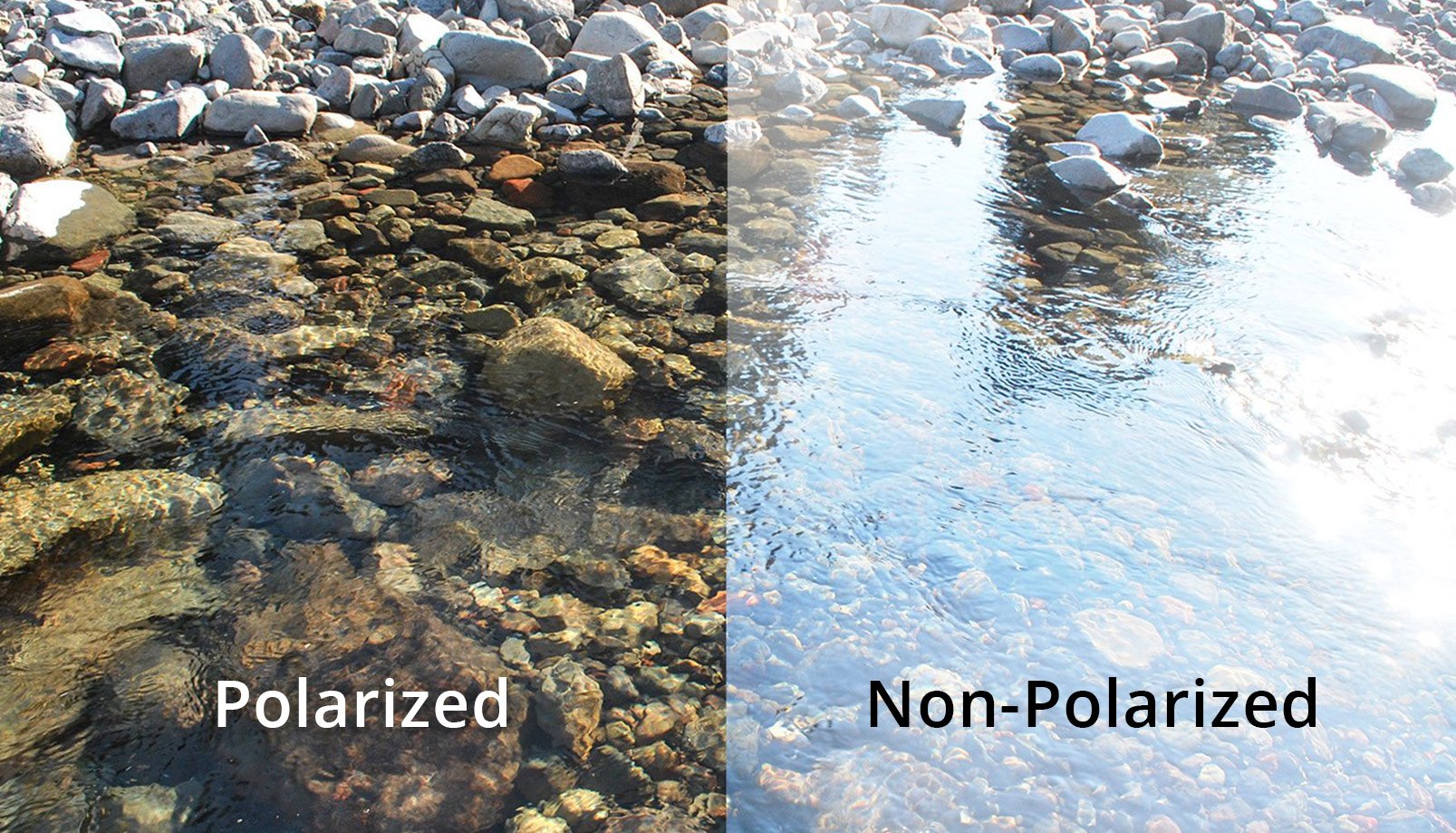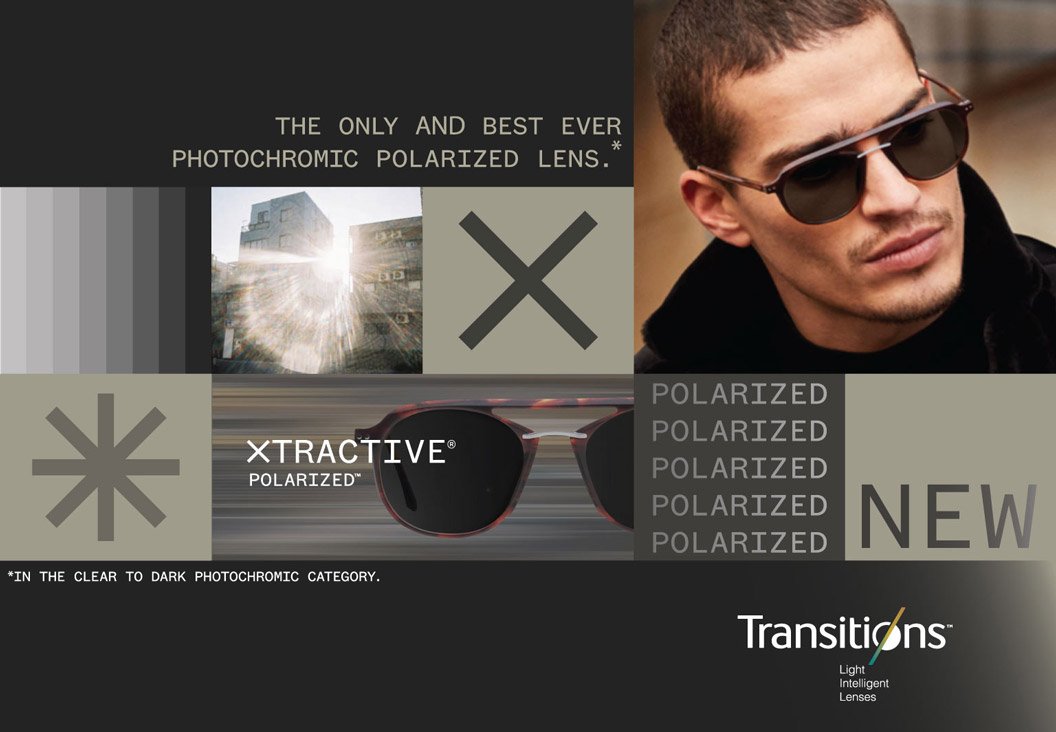The Perks of Polarization
Quick mental exercise: we’re going to give you a word, and we want you to think about what you associate with that word. Ready?
Summer.
We’ll give you a second.
Now that you’re back, what did you think of? For us, summer beckons sunscreen, shorts, flip flops, barbeques, no school, fresh fruit, and without a doubt: sunglasses.
Sunglasses are a common thing to come by and for good reason — they are the absolute best way to protect your eyes from harmful UV rays from the sun. But there’s a difference between finding sunglasses and finding good sunglasses.
Good sunglasses offer more than just tinted lens and UV protection. Let us introduce you to the world of polarization!
What is polarization?
To understand what polarization means, you also have to understand the difference between polarized and unpolarized light. In our last blog, we learned about how light moves as a wave on the electromagnetic spectrum (EMS). The next step is learning that light doesn’t always move in a perfectly uniform wave. Light waves that randomly fluctuate are known as unpolarized and are more common than you’d believe. Many light sources, like the glowing ball of plasma in the sky we know as “The Sun” produces unpolarized light.
The effects we see from unpolarized light tend to manifest as a glare or fogginess from our glasses. If you’re on the Truckee with non-polarized sunglasses, you’ll see this come from the sun’s reflection in the water. As light is travelling and bouncing off of all kinds of objects, there’s a type of interference that happens. A lot of times, looking through non-polarized glasses makes colors feel more washed out than they should be.
Image from Blink Vision.
While these unpolarized light waves bounce around at random, polarized lenses organize them, letting some in and bouncing others out. This cuts down glare and reflection.
Imagine looking at an object between two pieces of paper. You only see what is between those two sheets — everything else is blocked. Polarization works the exact same way, but on a much, much smaller scale.
How is it used in sunglasses?
Though not a necessity, polarization offers an added level of comfort and benefits over a standard pair of shades. A special chemical is applied to the surface of a sunglasses lens that activates polarization. At a microscopic scale, this looks like a bunch of lines on the lenses. These lines are small enough that you can effectively see through the lens, but just big enough to bounce off lightwaves that are perpendicular to what the polarization allows.
The end result are sunglasses that allow the wearer to see a slightly darker, clearer image. This is especially great for people who are active or outside a lot. Outside of eyewear, polarization filters are also great for photographers — they will use filters in order to cut out glare and noise for more stylized landscape shots.
Now for the downsides
As cool as polarization lenses are, there are some drawbacks. They’re great for outdoor use, but aren’t the best indoors. The same application that makes polarized lenses great for cutting out glare can interfere with digital screens and other polarized surfaces. This results in seeing an oil-slick-like rainbow in objects. It’s not damaging to your eyes, but can definitely be annoying and off-setting.
Image from Reddit.
Polarized lenses also don’t offer a whole lot of protection for your eyes on their own. They are not a replacement for UV-reflecting sunglasses, however, polarization is usually paired with UV reflection, so you have the added benefits of keeping your eyes safer and seeing the world around you without glare.
What’s on the horizon for polarized eyewear?
Eyewear technology is constantly evolving. While polarization is just one cool addition to what can already be a spectacular pair of sunglasses, it can get even better. Transitions recently announced a new line of XTRActive Polarized lenses. These lenses have all the benefits that Transitions are known for: automatically tinting or clearing up depending on how much light they’re being exposed to. But with the XTRActive Polarized lens, it goes a step further.
Image from Transitions.
Like all the Transitions that came before it, XTRActive Polarized lenses turn dark when exposed to direct sunlight. But the really cool thing is how the polarization gets activated, too. Whereas other polarized glasses cause that before-mentioned oil slick when looking at a digital screen, these transition their polarization properties on top of their shading properties. So indoors, they’re just as clear and effective as any other pair of prescription glasses.
This is just one example of how the future of polarization is shaping up. Polarized lenses are finding all kinds of new applications and uses outside of eyewear. But as glasses are involved, ask us about these Transitions the next time you come to see us. We’re happy to show you all the features and benefits that come with them.



